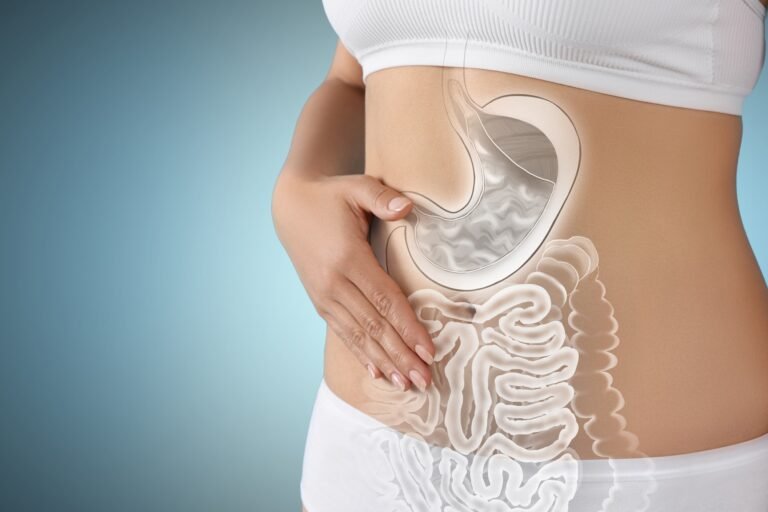How gut transit and pH shape the role of the microbiome in metabolism and health, offering insights into personalized nutritional strategies.
Study: Gut physiology and environment explain variations in human gut microbiome composition and metabolism. Image credit: New Africa / Shutterstock
In a recent study published in the journal Nature Microbiologyresearchers investigated how gut physiology and environmental factors contribute to variations in the composition and metabolism of the human gut microbiome.
Background
Diet affects the composition and metabolism of the gut microbiome, but even with identical diets, considerable variation remains, suggesting additional contributing factors.
Gut transit time has been shown to influence microbiome composition, with longer transit associated with increased microbial protein degradation and methane production.
Short-chain fatty acids (SCFAs) are generally beneficial, while metabolites from proteolysis, such as hydrogen sulfide and ammonia, are associated with adverse health effects. Changes in gut pH also affect microbial communities.
Understanding these dynamics is critical to designing effective personalized nutritional strategies that enhance gut health. Further research is needed to explore how physiological factors such as transit time and pH interact with diet to influence gut microbiota and host health, allowing for personalized nutritional strategies.
About the Study
A nine-day observational study, “Personalized dietary recommendations based on the interaction between diet, microbiome and abiotic conditions in the gut (PRIMA)” was conducted at the University of Copenhagen between April and December 2021. It involved 63 healthy participants from Denmark.
Participants provided written informed consent, adhering to ethical guidelines. Of the original group, 61 completed the study, with two excluded due to illness and antibiotic use.
Participants (ages 18–75, body mass index (BMI) 18.5–29.9 kg/m²) were excluded if they had conditions such as inflammatory bowel disease or were taking antibiotics recently. They were compensated with gift cards and asked to maintain their usual diet avoiding sweet corn, alcohol, smoking, and vigorous exercise prior to sample collection.
Daily stool samples, dietary records, urine samples, and other measurements such as stool patterns, gastrointestinal symptoms, and fasting blood and breath tests were collected. Participants received a wireless motility capsule (SmartPill), which provided detailed data on luminal pH, temperature and pressure to measure gut transit times.
Anthropometric measurements and a standardized meal test were also performed. Metabolic profiling was performed on urine and stool samples and microbiome profiling used 16S ribosomal RNA (rRNA) sequencing.
Study Results
Participants, aged 39 ± 13.5 years with a mean BMI of 23.6 ± 2.8 kg/m², were instructed to maintain their usual diet and lifestyle throughout the study period. The study included two visits, during which fasting blood samples were taken to measure glucose, insulin and C-peptide levels. Breath samples were collected to estimate hydrogen and methane concentrations.
At the first visit, participants were given a standardized breakfast, which represented 25% of their daily energy needs, to ensure consistency before a subset (n = 50) ingested a SmartPill. The SmartPill measured the transit times and pH of the whole intestine and in segments. Unlike previous studies that used simple meals to monitor transit, this study used a complex meal to better reflect real-life diet-microbiota interactions. Postprandial urine and breath samples were collected to provide further information on participants’ metabolic responses.
Participants also recorded daily 24-hour dietary records using the Myfood24 platform and noted bowel habits such as stool consistency (using the Bristol Stool Form scale), stool frequency and bowel movement time.
Urine (first morning sample) and stool (first bowel movement) samples were collected daily. Faecal water content, a surrogate indicator of transit time and faecal moisture, was assessed for all samples.
Urine and faecal metabolomes were mapped using untargeted liquid chromatography-mass spectrometry (LC-MS), and gut microbiome composition was determined using 16S rRNA gene sequencing, adjusted for microbial load to ensure quantitative accuracy.
The study revealed intra- and inter-individual variation in the stability of the gut environment, as seen in day-to-day variations in factors such as stool pH, stool moisture and microbial load.
Segmental transit time and pH measurements provided by the SmartPill showed a wide range of values, highlighting the significant variation in gastrointestinal dynamics between participants.
Findings showed that faecal moisture and pH contributed significantly to both intra- and inter-individual variations in gut microbiome and metabolomes. These ideas emphasize the central role of gut transit time and colonic pH as key determinants of microbial composition and metabolic activity.
Untargeted metabolomics identified several microbial, host, and food-derived metabolites that correlate with transit time and pH. For example, microbial fermentation products such as SCFAs were associated with shorter transit times, while proteolytic byproducts were more prevalent with longer transit times.
conclusions
In summary, this study demonstrated significant variability in transit time and pH between healthy individuals, explaining differences in microbiome composition and host-microbe metabolism.
Factors such as transit time and pH influenced microbial activity, highlighting the importance of the gut environment in shaping microbiota responses. Specific metabolites were associated with longer transit times, with potential clinical implications for the management of conditions such as constipation.
These findings pave the way for future research into tailored nutritional interventions that take into account both physiological and microbial factors to optimize gut health.
Journal Reference:
- Procházková, N., Laursen, MF, La Barbera, G., Tsekitsidi, E., Jørgensen, MS, Rasmussen, MA, Raes, J., Licht, TR, Dragsted, LO, & Roager, HM (2024). Gut physiology and environment explain variations in the composition and metabolism of the human gut microbiome. Nature Microbiology, 9(12), 3210-3225. DOI: 10.1038/s41564-024-01856-x,
